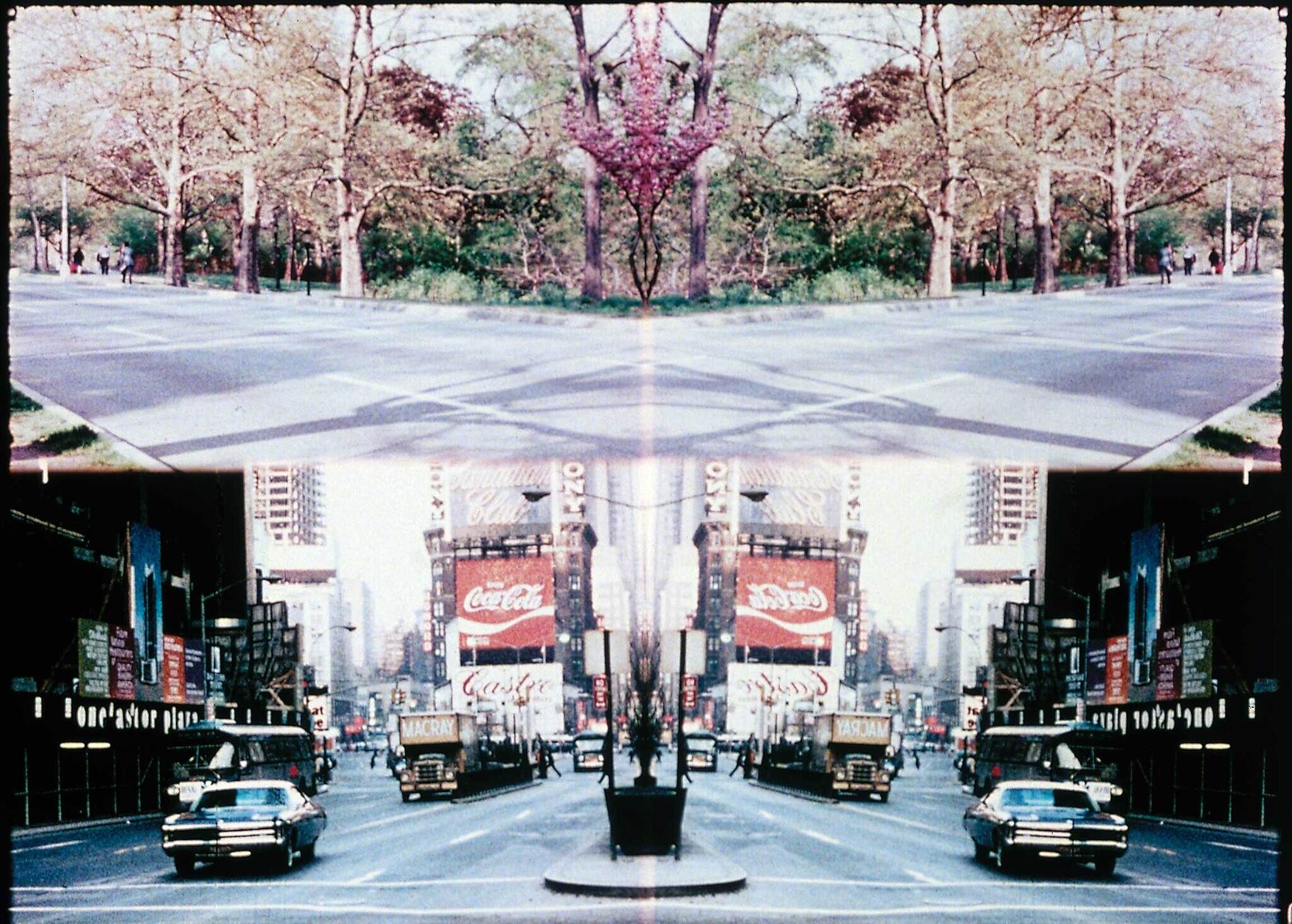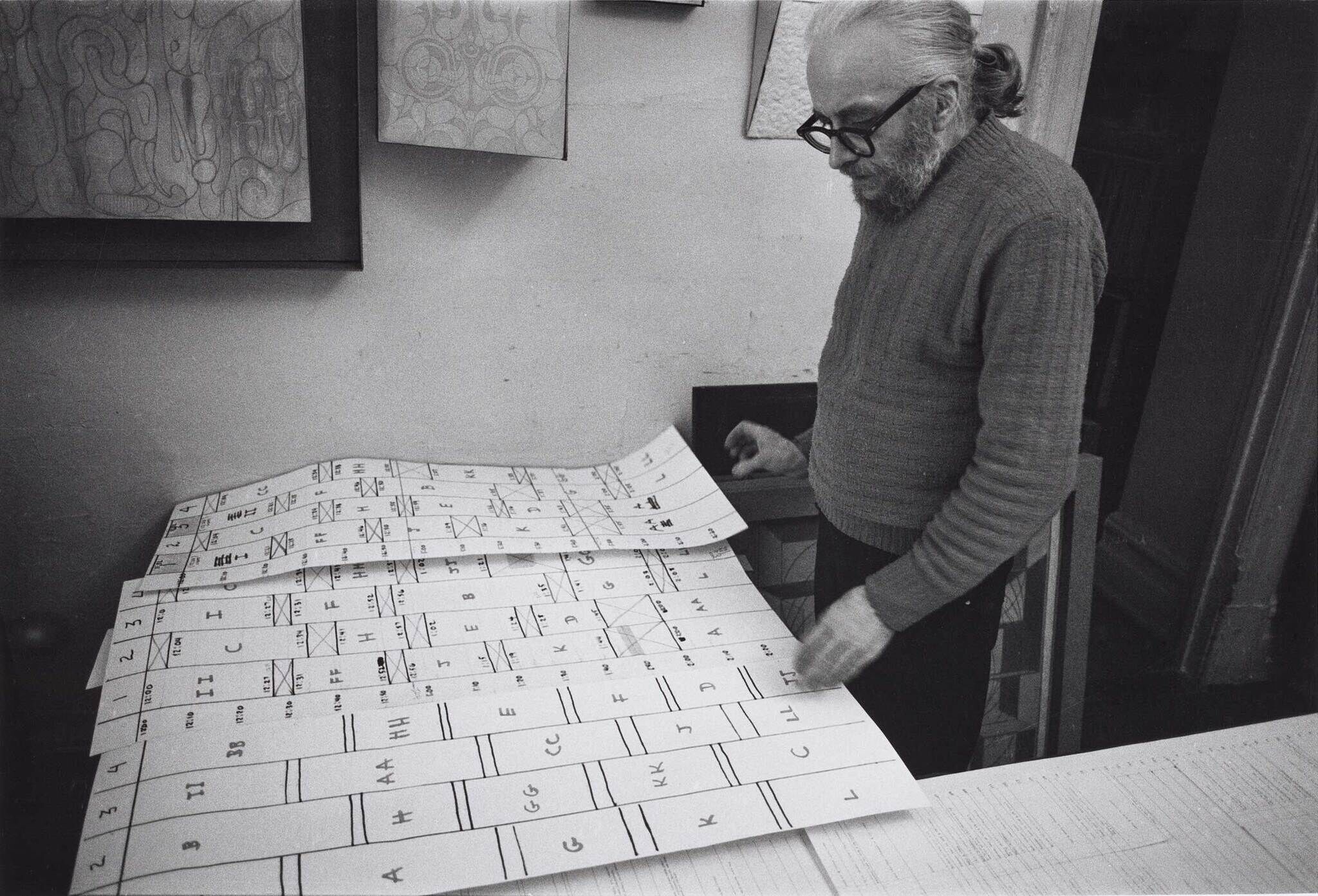Fragments of a Faith Forgotten: The Art of Harry Smith | Art & Artists
Oct 4, 2023–Jan 28, 2024
Fragments of a Faith Forgotten: The Art of Harry Smith | Art & Artists
Mahagonny
6
Smith's epic film Mahagonny (1970–80) is a four-screen translation of Kurt Weill and Bertolt Brecht's 1930 opera Aufstieg und Fall der Stadt Mahagonny (Rise and Fall of the City of Mahagonny), a political satire set in an imaginary American metropolis that prioritizes indulgence over lawfulness and concludes with the city's total destruction. Shot from 1970 to 1972 and edited by Smith for eight years, the film pairs the opera’s score with four categories of images—people or portraits (P), animation (A), scene or symbols (S), and nature (N)—that appear on screen in the following order: P.A.S.A.P.A.S.N.A.P.A.S.A.P.A.N.S.A.P.A.S.A.P.N.
Most of the film was shot in the Chelsea Hotel, where Smith lived from 1968 to 1977, and features notable avant-garde figures such as poet Allen Ginsberg, filmmaker Jonas Mekas, and musician Patti Smith. These appearances are intercut with shots of New York landmarks, works from Robert Mapplethorpe’s studio, and Smith’s own animations. The film merges scenes from Smith’s life and work with recognizable symbols of nature and humanity that he intended to be universally accessible.
Originally composed of a grid of four 16mm-images, the film was redesigned by Smith as a multiscreen projection to allow for fanciful modes of display. One of those—a boxing ring that echoes the original set of Weill and Brecht’s opera—is referenced in the exhibition.


